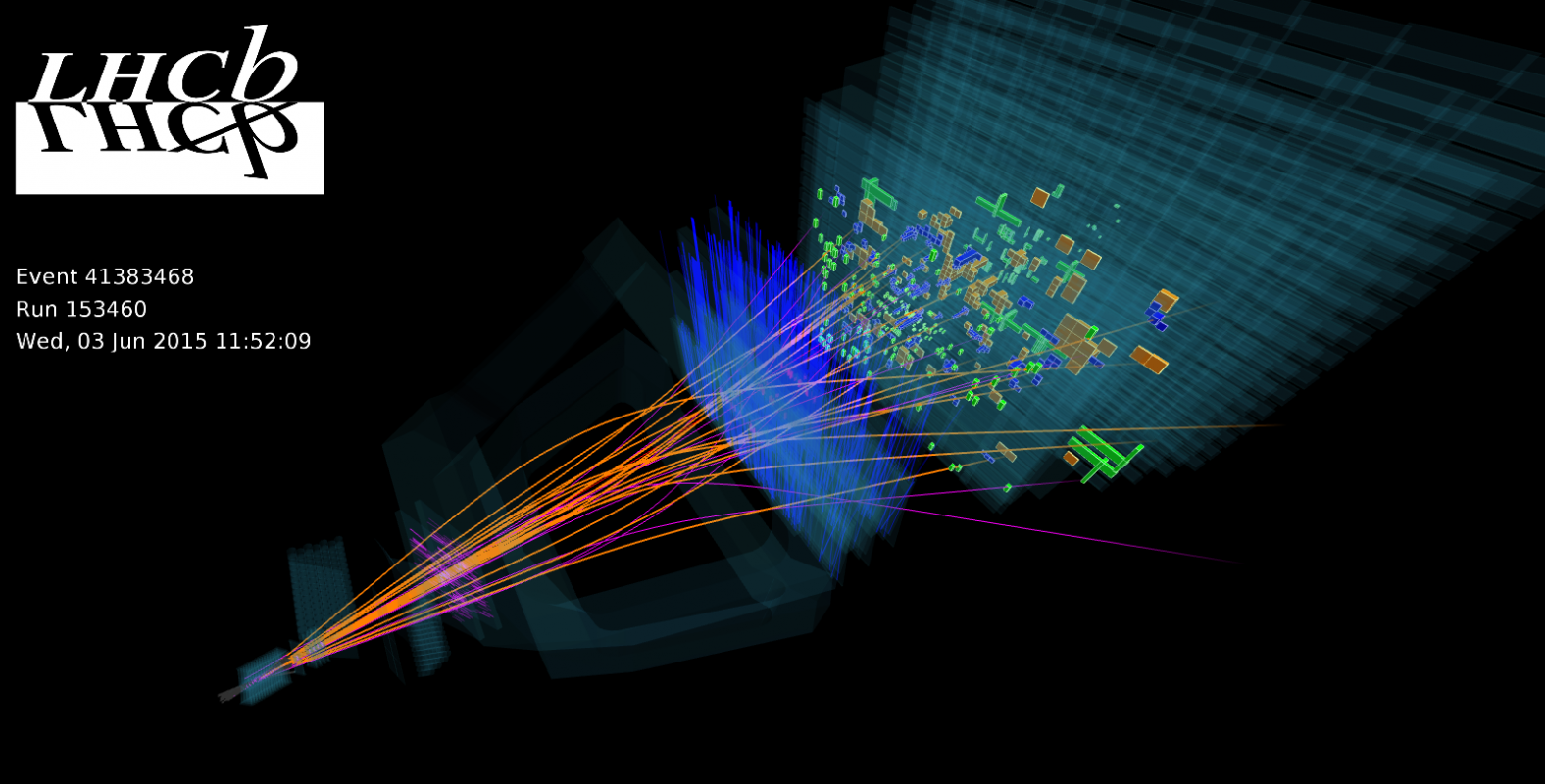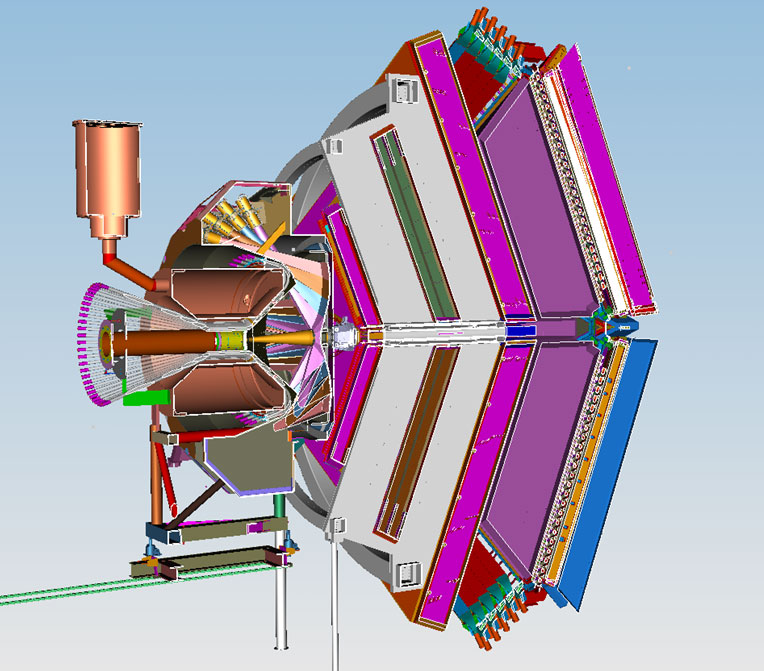Research: experimental facilities
Since 2003 there has been an explosion in the observation of new hadronic states that cannot be classified by the well-tested quark model of mesons (quark-antiquark) and baryons (three quarks or antiquarks). The properties of these states indicate that they are combinations of four, five, or more, quarks and antiquarks, making them manifestly exotic. A recent high-profile example was the discovery of two pentaquark candidates by the LHCb collaboration at the CERN Large Hadron Collider (LHC), using the world’s largest sample of b- quark hadron decays. No scientific consensus has emerged to explain the observed exotic hadron spectrum, demanding a new set of experimental observations that will feed the development of theoretical models to describe the dynamics of multiquark states. The coming years will see a significant increase in size of datasets at particle and nuclear experiments such as those at CERN and JLab, providing fertile ground for new exotic hadron discoveries. This will lead to an improved knowledge of non-perturbative Quantum Chromodynamics, which is essential to understand as we look for signs of beyond-the-Standard Model effects in processes involving strongly interacting particles.
Experimental facilities
LHCb

The LHCb experiment is a dedicated flavour-physics laboratory at the CERN Large Hadron Collider (LHC), which collides protons at center-of-mass energies, up to 14 TeV. Since starting operations in 2010 LHCb has successfully detected, reconstructed and recorded the world’s largest samples of b-quark hadron decays. Recent results coming from the LHCb experiment include the confirmation of the Z(4430) tetraquark candidate and the demonstration that it has the rapid phase-motion characteristic of a resonance. In 2015 the LHCb collaboration published the first observation of two new states that decay to Jpsi + proton and are consistent with being pentaquarks.
Members of the network are now starting to analyse data from Run 2 of the LHC to look for signs of new exotic hadron states in addition to new decay and production mechanisms of the existing tetraquark and pentaquark states, which will tell us more about the true nature of their internal degrees of freedom (e.g., hadronic molecules or tightly bound diquarks).
CLAS12

CEBAF Large Acceptance Spectrometer (CLAS12) is a nuclear and particle physics detector located at Jefferson Laboratory. It is used to study the properties of the nuclear matter. The incoming beam of electrons or photons with energy up to 12 GeV collide with the target nuclei (protons, deuterons, helium, carbon,...lead) at the centre of CLAS. Experiments using electron scattering primarily probe the structure of protons and their excitations at various sub-nuclear "length scales". Experiments using real photon beams primarily probe the production and decay of mesons and excited baryons. A new series of experiments start this(2017) year after the 12-GeV upgrade of the CEBAF accelerator.
Members of the network are analysing already collected CLAS6 data looking for strange hexaquarks and investigating hyperon-baryon interactions elucidating strange matter dynamics at small distances and large densities. With the use of 12 GeV electron beam we are also preparing to elaborate the size and the structure of various 5 and 6-quark objects disentangling molecular/dynamical generated states from genuine compact multiquark particles.
GlueX

GlueX is a particle physics experiment located at the Thomas Jefferson National Accelerator Facility (JLab). Its primary purpose is to understand the nature of confinement in quantum chromodynamics by mapping the spectrum of exotic mesons generated by the excitation of the gluonic field binding the quarks. If successful, GlueX would be the first experiment to discover such exotic mesons, which have never before been observed. The experiment will be able to probe new areas by using photoproduction (that is, the scattering of a real photon on a nucleon) to produce exotic states.
Members of the network are now studying the production of various meson states aiming in disentangling of an exotic from a usual one utilizing diverse theoretical and experimental approaches (Partial Wave Analysis, coupled channel Isobar models, single/double/triple polarisation measurements etc...)
Crystal Ball

The Crystal Ball A2 collaboration investigates strongly interacting particles in the low-energy regime, where quantum chromodynamics as the underlying theory is not perturbatively solvable. Using high intensity energy-tagged circular and linear polarised bremsstrahlung photon beam together with highly-polarised proton/deuteron targets and nucleon recoil polarimeter one can study nucleon excitations spectrum with unprecedented accuracy.
The d*(2380) dibaryon is the only multiquark state which can be produced copiously using current experimental techniques. Members of the network are now trying to setup a dibaryon factory at Crystal Ball detector to study this state at clean and controlled environment. Another goal is to study dynamically generated and molecular states in nucleon excitation spectrum.
Theoretical concepts
- Lattice QCD


